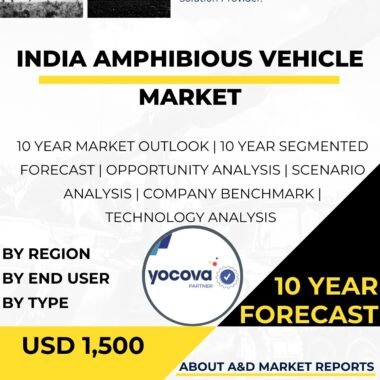Description
Netherlands Amphibious Vehicle Market
Netherlands amphibious vehicle market has been an important and evolving segment within the country’s defense and security industry. Amphibious vehicles, also known as amphibious assault vehicles or landing craft, are specialized vehicles designed to operate on both land and water, making them essential for military operations, disaster response, and other critical missions that involve crossing water bodies or operating in challenging terrains.
The Netherlands recognizes the strategic significance of amphibious vehicles in enhancing its defense capabilities, disaster management, and humanitarian assistance operations. As a nation with a long history of maritime and riverine operations, the Netherlands has a vested interest in maintaining a capable fleet of amphibious vehicles to support its defense forces and provide rapid response in times of emergencies.
The Netherlands amphibious vehicle market encompasses both domestic production and import of amphibious vehicles. The country has reputable defense companies and shipyards that are involved in the design, development, and manufacturing of amphibious vehicles. Additionally, the Netherlands collaborates with international partners to benefit from advancements in amphibious vehicle technology and to access a diverse range of vehicle options.
One of the key drivers of the Netherlands amphibious vehicle market is the country’s commitment to maintaining a modern and agile defense force. Amphibious vehicles play a crucial role in enhancing the mobility and flexibility of the Netherlands Marine Corps, enabling them to conduct amphibious assault operations and support missions in littoral and riverine environments. These vehicles are vital for rapid troop deployment, beach landings, and river crossings, allowing the Netherlands Marine Corps to maintain a high level of operational readiness and respond quickly to security threats.
The market is also influenced by the Netherlands’ commitment to disaster response and humanitarian assistance. Amphibious vehicles are indispensable assets during flood and disaster relief operations, allowing rescue teams to reach inaccessible areas and provide essential aid to affected communities. The ability of amphibious vehicles to traverse both land and water makes them invaluable in situations where traditional vehicles would be hindered by flooded or difficult terrains.
The Netherlands amphibious vehicle market caters to various vehicle types, including armored personnel carriers (APCs), amphibious transport vehicles, landing craft, and other specialized platforms. These vehicles are designed with features such as watertight sealing, buoyancy, and propellers, allowing them to navigate through water bodies and perform amphibious landings effectively.
In addition to their military and disaster response applications, amphibious vehicles are also used in commercial sectors such as tourism, water sports, and transport. These vehicles provide unique and exciting experiences for tourists, allowing them to explore waterways and scenic locations that are otherwise inaccessible by traditional means.
The market is characterized by continuous efforts to enhance the capabilities and versatility of amphibious vehicles. Research and development are directed towards improving vehicle performance, amphibious maneuverability, and survivability in challenging environments. Integration of advanced technologies, such as navigation systems, communication equipment, and vehicle armor, further enhances the effectiveness of amphibious vehicles in military and security operations.
The export potential of the Netherlands’ expertise in amphibious vehicle technology is another significant aspect of the market. The country’s reputation for technological innovation and maritime expertise makes it an attractive partner for other nations seeking to enhance their amphibious capabilities. Exporting amphibious vehicles and related technologies provides economic benefits for the Netherlands’ defense industry and fosters international collaborations.
The market also addresses concerns related to environmental sustainability and safety. Amphibious vehicles are designed to minimize their impact on fragile ecosystems during waterborne operations. Additionally, safety standards and protocols are implemented to ensure the safe operation of amphibious vehicles during military exercises, disaster response missions, and civilian applications.
In conclusion, the Netherlands amphibious vehicle market is an important and evolving segment within the country’s defense and security industry. Amphibious vehicles play a vital role in enhancing the mobility, flexibility, and response capabilities of the Netherlands Marine Corps, enabling them to conduct amphibious operations and support disaster relief missions. The market is driven by the Netherlands’ commitment to maintaining a modern defense force, disaster response capabilities, and maritime expertise. As the country continues to invest in research, development, and international collaborations, the amphibious vehicle market is expected to play an increasingly pivotal role in shaping the Netherlands’ defense capabilities and supporting its military operations and disaster response efforts both at home and in international missions.




